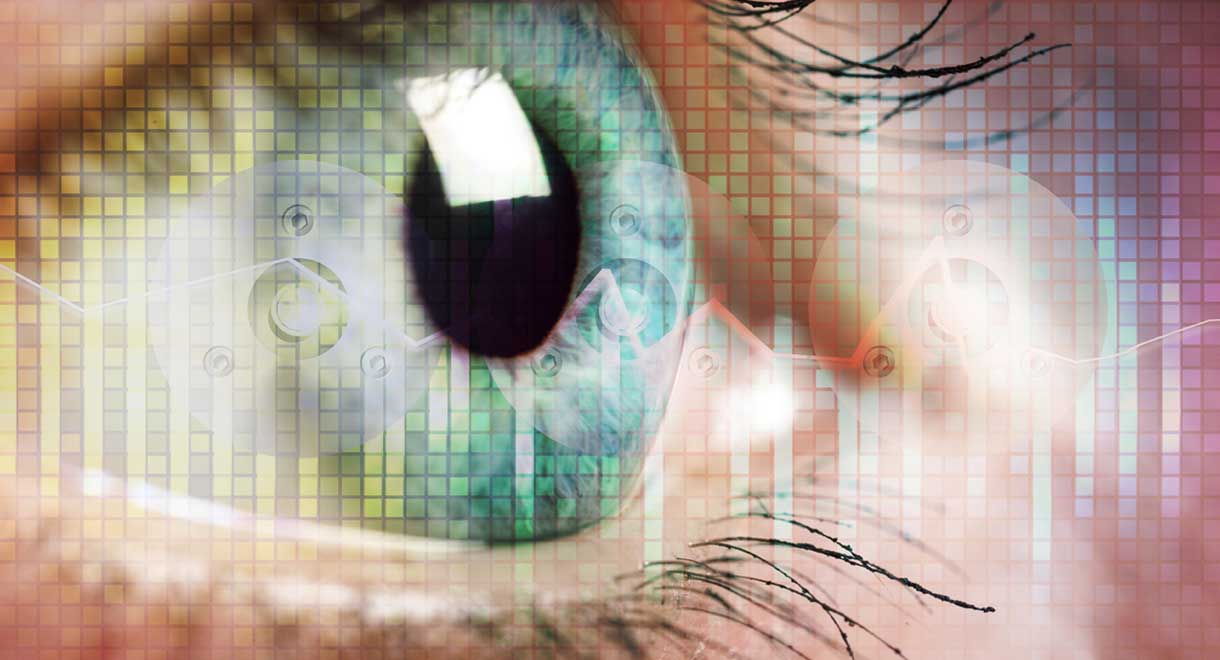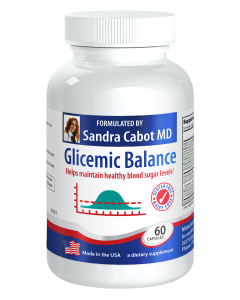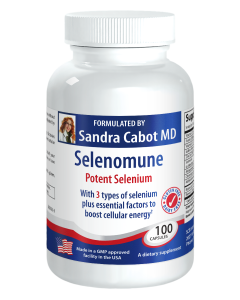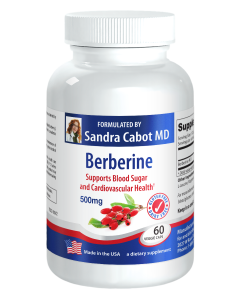

Cataracts: Natural Remedies To Save Your Sight
A cataract is a clouding of the normally clear lens of the eye. Cataracts are incredibly common; they are the most common cause of impaired vision or blindness.
By age 80 more than half of all Americans have a cataract in one or both eyes, or they have had cataract surgery before then. Diabetics are most prone to developing cataracts, and as the incidence of diabetes is growing worldwide, so too are cataracts.
Looking at the world through a cataract is like seeing the world through a foggy window. Everything can look blurry and it becomes especially difficult to see clearly at night. Driving at night can be very difficult as bright lights appear to have a halo around them.
Why does the lens of the eye become clouded?
The short answer to that question is oxidative damage. This means the proteins that comprise the lens of the eye experience continual wear and tear and damage from free radicals.
What causes this damage?
Sugar is a major culprit and that’s why diabetics are very prone to developing cataracts. Other things can promote oxidative damage, including smoking cigarettes, allergies, consuming too much omega 6 rich vegetable oil and not consuming enough antioxidants in your diet.
Some people believe cataracts are an inevitable part of aging but I disagree and believe there is plenty you can do to protect your vision.
How do cataracts form?
The lens of the eye is mostly made of protein and water and is located behind the colored part of your eye (iris). The purpose of the lens is to focus the light that enters your eyes, in order to convey a sharp image to the retina. If the lens has become clouded, light that enters the eyes becomes scattered and therefore a blurry image reaches the retina.
As we age, it is normal for the lens of the eyes to become less flexible, thicker, and less transparent. However, if you have poor health and a lot of oxidative damage occurring in your body, this natural process is accelerated.
Factors that increase your risk of developing cataracts
- Diabetes, syndrome X, prediabetes, metabolic syndrome, and insulin resistance
All of these conditions are associated with high blood sugar. If there is too much sugar in your bloodstream it binds to various proteins in your body and damages them in a way to produce Advanced Glycation End products (AGEs). When this happens to the lens in your eyes, the damaged protein cannot function properly and takes on a clouded appearance. Diabetics have a three to five times greater risk of developing cataracts. If you are not a diabetic but have diabetics in your family, you are still at increased risk. Diets high in sugar, carbohydrate rich foods (anything made of flour or grains) and most vegetable oils increase cataract risk. Even if you’re not overweight, eating a lot of sugar or foods that eventually get digested into sugar can increase your risk of cataracts. Berberine is a herbal remedy with powerful benefits for diabetics. It helps to normalize blood sugar and reduces the destructive effects of sugar in the bloodstream. Glicemic Balance capsules contain ingredients that help to reduce hunger and cravings for carbohydrate and sugar, making it much easier to eat well.
Most processed and refined vegetable oil promotes oxidative damage in the body. Vegetable oils to avoid include canola oil, cottonseed oil, sunflower, safflower, corn, soy, rice bran and grape seed oil, as well as all margarine. These oils raise the risk of macular degeneration as well as cataracts. The healthiest oils to include in your diet are extra virgin olive oil, coconut oil, macadamia or avocado oil, pastured butter or ghee and other animal fats. These fats are healthy because they are high in monounsaturated or saturated fatty acids, which do not create oxidative damage in the body like some polyunsaturated fats can. - Allergies
People who suffer with allergies have an overstimulated immune system that releases high levels of inflammatory chemicals. These chemicals cause wear and tear in the body. Cortisone, which is commonly used for allergies and autoimmune disease can raise the risk of cataracts. - Excessive exposure of your eyes to ultraviolet light
It is best to wear sunglasses on days the sun is very bright or if there is a lot of glare. - Lack of antioxidants in the diet
The lens of the eye is bathed in a fluid that is supposed to contain high levels of antioxidants. If you do not include enough of these antioxidants in your diet, they will not be present in your eyes to offer you protection from oxidative damage. Vitamins and the colored pigments that give vegetables their color are both equally important for eye health. - Smokers are at much higher risk of cataracts and also macular degeneration.
- Trauma (injury) or surgery to an eye raises the risk of cataract development.
- Occupations involving welding, glass blowing or metal work raise the risk of cataracts.
- Having an underactive thyroid gland is another risk factor
Ways to protect your vision
Whether you want to prevent cataracts, or you have already been diagnosed with a cataract in one or both eyes, the following suggestions may help you:
- Try to get your blood sugar level as close to normal as possible. If you are a diabetic, the better able you are to control your blood sugar level, the less likely you are to experience diabetic complications. Ideal blood sugar is not higher than 99 mg/dL (5.5 mmol/L). If you need help achieving a healthy blood sugar, there is an eating plan in our book Diabetes Type 2 - You Can Reverse It Naturally.
- Increase the amount of vegetables you consume and try to choose brightly colored varieties. Most people do not consume enough vegetables. Please try to eat one or two large salads each day. Dress your salads with one of the healthy oils mentioned above, along with apple cider vinegar, lemon, or lime juice. Include fresh herbs in your salads, such as basil, dill, cilantro, arugula, or watercress. If you make your own raw vegetable juices, you will consume a concentrated boost of antioxidants. If you’re not sure which vegetables go well together, see the recipes in my book Raw Juices Can Save Your Life.
- Some research has shown that vitamin E helps to protect against cataract development. Observational studies have shown that people with a higher level of vitamin E in their diet are less likely to develop cataracts. Vitamin E is present in extra virgin olive oil, raw nuts and seeds, and avocados. This vitamin is sensitive to heat and is easily destroyed if foods rich in vitamin E are cooked. Taking a vitamin E capsule can help to supplement your intake.
- Selenium is a very important mineral to help reduce your risk of developing cataracts because it is required in order for your body to manufacture glutathione. Glutathione is a powerful detoxifier that helps to mop up free radicals and reduce oxidative damage in your body.
- Include more spices in your diet. Not only will this make your meals tastier, spices have powerful antioxidant benefits. Turmeric, ginger, cumin, cinnamon, cilantro and cloves are particularly beneficial.
- You must pay attention to your liver. It is one of the hardest working organs in your body and it must filter and cleanse your bloodstream of all toxins and metabolic wastes. If you have a sluggish liver or a liver disease such as fatty liver or hepatitis, your liver will not do a good job of keeping your bloodstream clean. I suggest you follow the eating recommendations in my book Fatty Liver - You Can Reverse It and take a good quality liver tonic like Livatone Plus.
Cataract surgery is one of the most commonly performed medical procedures. Luckily, it is classed as one of the safest medical procedures there is. Surgery is the only effective remedy for advanced cataracts. It involves removing the cloudy, damaged lens and replacing it with an artificial implant. Most people notice an improvement in their vision almost immediately.
Cataracts are incredibly common as people get older but they are not an inevitable part of aging. Your vision is precious; please do your best to protect it.
The above statements have not been evaluated by the FDA and are not intended to diagnose, treat or cure any disease.
Know someone who might benefit from this article? Share it!
Need Help?
1-888-75-LIVER
Monday to Friday, 9:00 am to 5:00 pm MST
100%
Satisfaction Guaranteed
If it’s faulty or wrongly described, we’ll replace it.













